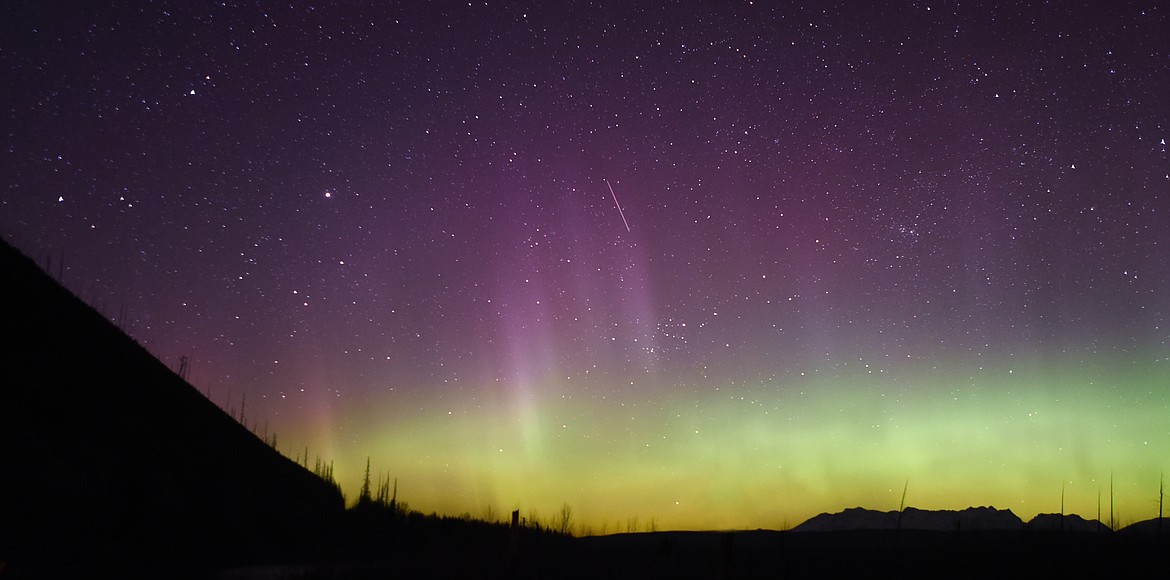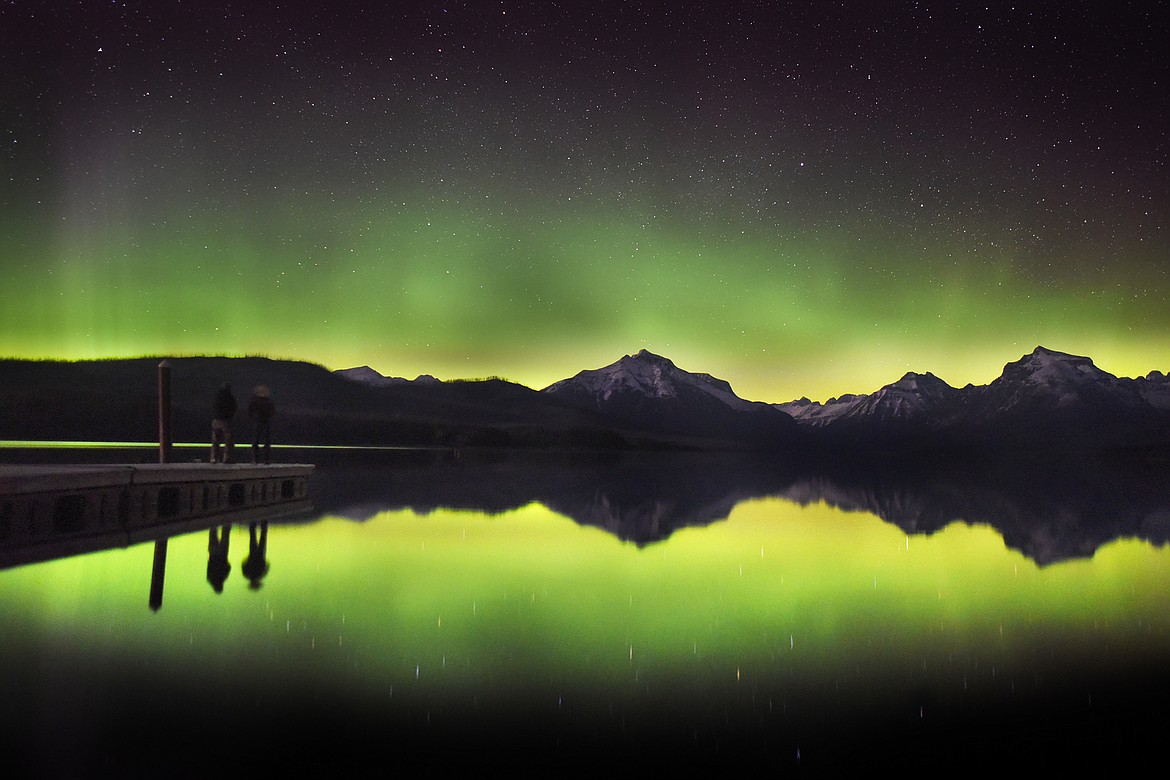Glacier Park continues work toward 100% Dark Sky compliance
Each evening, as the last rays of sunlight fade from the striking mountain views of Glacier National Park, the park begins to showcase another side of its natural beauty — a starry side.
While most visitors come to the park for its amazing mountain views, spectacular hikes and abundant wildlife, Glacier National Park is quickly becoming known for another reason. With its location far away from major light pollution and crisp, clear mountain skies, the park is becoming one of the top destinations for amateur astronomers and stargazers.
Each year, the park’s star parties, organized in conjunction with the Big Sky Astronomy Club, draw as many as 700 visitors a night to Logan Pass and more than 30,000 throughout the summer.
Along with its sister park, Waterton Lakes National Park in Canada, Glacier National Park’s efforts to preserve its night skies were recognized by the International Dark-Sky Association in August as the organization awarded Waterton-Glacier International Peace Park full certification as an International Dark Sky Park.
To gain certification, the parks had to assess and inventory lighting fixtures throughout the parks — thousands of them — to see if they met the Dark Sky Association’s standards, and if they did not, replace them with ones that did.
The parks first received a provisional Dark Sky Park designation in 2017 and have been working tirelessly to replace the lighting in an effort to achieve certification.
“Night skies are either an afterthought or something that most people don’t think about. A large percent of the world’s population can’t even see the Milky Way anymore,” said Glacier Park Natural Resource Program Manager Mark Biel, who spearheaded the process. “As society and infrastructure has expanded, you see a lot of lights that are shooting light upwards into the sky and you have to ask why. It’s not necessary. It’s just a waste of electricity and a waste of money and we are doing our part to combat that problem.”
With recent studies showing that as many as 80% of Americans live in areas where the Milky Way is obscured by light pollution, Glacier National Park is giving many tourists their first glimpses of what the night sky has to offer, from breathtaking views of the Milky Way to meteor showers and even an occasional glimpse of the Northern lights.
THE ROAD to Dark Sky certification for the parks began more than a decade ago, but began gathering steam with the efforts of Iree Wheeler, a Dark Sky intern with Glacier in 2015 and 2016. Wheeler spent countless nights measuring nighttime luminance throughout the parks, information that was vital for the International Dark Sky Association’s application process — an application that consisted of more than 200 pages.
Wheeler was recognized for her efforts in the fall of 2020 when the International Dark Sky Association named her a “Dark Sky Defender,” making her one of only eight people in the world to receive the designation.
While Wheeler collected the data and Biel designed the plans that would make Glacier Park compliant to the Dark Sky Association’s standards, there was still the question of how the lighting upgrades would be funded.
With the help of the Glacier National Park Conservancy, the money was raised to fund the project, more than $250,000 to date.
“We are super excited by the announcement of the park receiving the certified status and we are delighted to have been a part of that. We are proud to have been a part of this process,” Conservancy Executive Director Doug Mitchell said. “It’s been really exciting to be a part of what really is a multifaceted program that is more than just looking up and saying ‘Hey look, it’s the Milky Way.’ Our board and grants committee saw the vision and the park’s passion for this project and we're proud to help make this certification possible.”
With funding secured, Glacier Park personnel got to work.
New LED streetlights were installed in the West Glacier headquarters area and park residences received either new, Dark Sky-friendly fixtures and LED bulbs, or simply had the existing bulbs replaced. Additionally, replacement fixtures have been purchased for the East Glacier, St. Mary, and Many Glacier areas of the park that will be installed soon, all while working to maintain the historic structures of the park.
“You can’t just go out and buy 100 of one kind of night sky friendly light fixture and put it on all of the park buildings,” Biel said. “A lot of our park buildings are historic and represent different eras of construction. You wouldn’t want a modern-looking fixture on an historic building. It just wouldn’t fit.”
WITH THE parks having met the Dark Sky Association’s 67% threshold for approved lights and light fixtures to become certified, the work will continue. Both Glacier and Waterton must reach 90% compliance within five years and 100% within 10 years to maintain their status.
“Dark skies are a vanishing resource and astro tourism is becoming bigger and bigger in a lot of places as being able to see the night sky becomes unique, which is kind of crazy to say. Fortunately, the great thing about light pollution is that, unlike other forms of pollution, it is one hundred percent reversible and we are doing our part to help,” Biel said. “This certification doesn’t give us the right to tell people outside of the park what to do, but hopefully it educates them about why night skies are important and motivates some of them to go home and make a difference where they live.”
Reporter Jeremy Weber may be reached at 406-758-4446 or jweber@dailyinterlake.com.




















